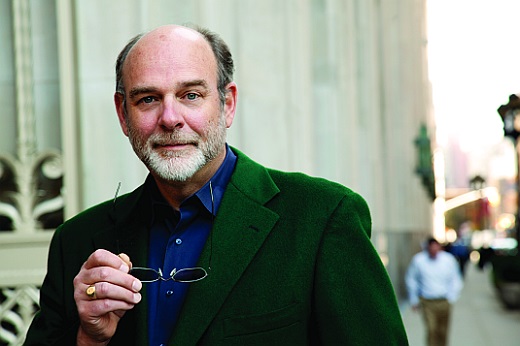
Is there a formula retail jewelers can use to make the shopping experience more enjoyable?
“It’s really about changing the paradigm to respond to the realities of the way people — especially women — shop, and their expectations of that experience,” advises Paco Underhill, CEO and founder of Envirosell, a New York-based market research and consulting firm dedicated to “exploring the science of shopping.”
“First of all, we need to recognize that selling has gone from a nose-to-nose interaction to a hip-to-hip interaction,” says Underhill. He believes the traditional way of selling jewelry, with the salesperson standing behind the display cases, detracts from the “distinctive nature of luxury products” that calls for proximity to the customer.
Focus on women
“Historically, a jewelry store was designed for the male shopper. In 2019, it is women who are buying for themselves. Jewelers have to create a social aspect that makes the store a lot less intimidating,” explains Underhill.
“Part of what is a little awkward in this modern age of jewelry is the recognition by the [often] male jewelry-store owner that it is the joy of trying something on that gets women to start falling in love with the stuff,” he continues. And that presents an opportunity.
A life experience or celebration — a wedding, birthday or career promotion — is often the catalyst for a woman purchasing jewelry. As Underhill points out, “wouldn’t the customer appreciate the retailer saying to her, ‘If you really want to get the right pair of earrings, you should bring the dress that you are going to wear it with — and I have a dressing room for you to change’?” The goal is to link the in-store shopping experience more effectively to the occasion for which the person is shopping.
Underhill acknowledges that store design is often influenced by loss-prevention measures, especially in prestige stores with high-value jewelry. He advocates ushering clients into a separate room and offering coffee or wine. “It’s a form of hospitality that helps generate the first sale and the expectation of the second, and holds the customer in place longer. You are creating more of a captive audience while establishing a sense of trust and reinforcing an aura of luxury.”
Educate and inform
Even the ever-increasing competition from online sales can be used to the jeweler’s advantage. Underhill advises translating the “immediacy and simplicity” of the online transaction.
“The premise is that online isn’t just about selling. It is about educating and informing,” he explains. “You want the customer to walk in the door with enough information to start asking questions
so that the salesperson can showcase
their knowledge and experience. In fact, one of the best ways to educate the customer about your online presence is in the store itself.”
Underhill envisions this scenario: “The customer walks in and says, ‘I have a question about this ring.’ The salesperson is happy to show her the piece, but adds, ‘We have a website where you can find this information. Let me show it to you on my iPad.’ The benefits are twofold: It extends the conversation and is a very effective method of engaging the customer.”
Take a picture
“Retail jewelers need to recognize that any time someone is waiting is an opportunity for guerilla marketing,” says Underhill. Most likely, the customer will be on her iPhone. If she could be scrolling through photos of women wearing jewelry she was trying on or thinking of buying, it would keep the sales process top of mind.
Furthermore, asking clients to submit photos of themselves wearing the jewelry furthers the retailer’s ongoing conversation with existing customers.
Looking ahead to the store of the future, Underhill envisions one that comes to you. “Consider a jewelry store in the parking lot of a tennis tournament selling tennis bracelets. Or a store that is in the middle of a wedding fair,” he suggests.
All this gets to the heart of the matter. “The jewelry business hasn’t done a very good job of communicating what jewelry means,” Underhill stresses. “Jewelry for the modern woman is one of the ways in which she states her individuality, often in the context of her professional life, where she has to dress in suits that resemble a uniform. Rather than what she is wearing, it is the accessories — the jewelry — that establish her style.”
Faced with the challenge of adapting to an ever-changing retail environment, retail jewelers have to make changes in their attitude and approach. On that score, Underhill quotes Chinese philosopher Lao Tzu: “The journey of 1,000 miles starts with the first step.”
Image: Paco Underhill, CEO and founder of Envirosell.Article from the Rapaport Magazine - March 2019. To subscribe click here.